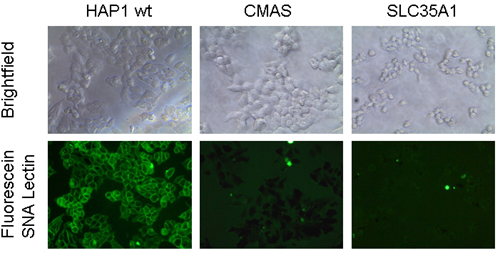Sialylation overview
This process is key to a number of cellular functions such as signal recognition and cell adhesion. Glycoprotein function, stability, and metabolism in particular are dependent upon correct sialylation.
This process is key to a number of cellular functions
Sialylation Diagram

Sialylation Diagram
What is Sialic Acid?
Sialic acid is a general term for N or O substituted derivatives of neuraminic acid (a 9-carbon backbone monosaccharide) which are widely expressed terminal carbohydrates on cell surface glycoproteins and glycolipids of eukaryotic cells.
N-glycolylneuraminic and N-acetylneuraminic acid
There are two common mammalian sialic acids: N-acetylneuraminic acid (Neu5Ac) and N-glycolylneuraminic acid (Neu5Gc) which are synthesized by 4 consecutive reactions from UDP-N-acetylglucosamine.
The bi-functional enzyme UDP-N-acetylglucosamine-2-epimerase/N-acetylmannosamine kinase (UDP-GlcNAc 2-epimerase) performs the first two key reactions of sialic acid biosynthesis.
Due to the abundant presence on the surface of eukaryotic cells, sialic acids play key roles in several pathophysiological processes including; metastasis, tumor progression, inflammation and viral infection.
Experimental validation
Staining using fluorescein-labelled Sambucus nigra (SNA) is impacted in CMAS and SLC35A1 knockout cell lines. Cells were washed with PBS, fixed with 4% paraformaldehyde and stained with fluorescein-labelled SNA lectin (Vector Labs). HAP1 wild-type cells were compared to cells bearing a frameshift mutation in CMAS or SLC35A1

Explore our popular knockout cell lines for Sialylation
| CMAS | NANP | NANS |
| GNE | SLC35A1 |
Order products
Human knockout HAP-1 cells
The single largest bank of isogenic cell lines with over 7,500 cell lines to choose from and trusted by academia, biotech, and pharma research labs.
Cancer-related cell lines
Choose from over 300 knock-in and knockout cell line models in many standard cancer cell lines such as DLD1, MCF10A, and HCT116.
Cas9 Stable Cell Lines
Simplify gene editing experiments with stably expressing Cas9 cell lines
CRISPRmod CRISPRa dCas9-VPR Stable Cell Lines
Streamline CRISPR activation experiments with stably expressing dCas9-VPR cell lines
Helpful Resources
Cell Line Engineering Brochure
Save time and de-risk your project. With 7,500 readymade knockouts from Horizon you can validate your research without having to invest valuable time, money, and resources.
Learn more
Top peer reviewed scientific articles using HAP1 cell lines
Need help?
Can't find the right cell model for your research?
Our Express and Custom engineering services could help you.
